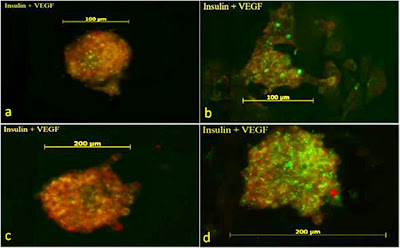I've been making a dress for Lola II. This is something I rashly offered to do after she had to return a dress that she really liked because it was such an unflattering colour. I'm not talking about a shade that didn't bring out the vivid colour of her eyes, I'm talking about a dress that made her look like she had a fatal disease. Seriously.
Dressmaking is something I used to do quite often when I was younger (a lot younger), and I used to rather enjoy it, so instead of doing a jigsaw puzzle on my Solitary Holiday back in May, I thought I'd make the dress.
It was touch and go whether we would find both a pattern and fabric that would do, but we managed it. Then Lola II said that she'd like to have a go a dressmaking herself, but wasn't sure a) what it entails, b) whether she'd like it, and c) whether she'd be able to manage it. So then I foolishly offered to blog my progress so she could see how it works. This is the consequence of all that foolishness.
Very shortly after this, she attempted a basic dressmaking operation (sewing a hem or something similar) and decided that there was no way on earth that she was going to do any dressmaking after all. Given that this post was already well on the way to completion, I thought I might as well carry on regardless.
A dress pattern comes on large sheets of tissue paper. The cover tells you how much fabric to buy, and there's a plan of how to lay the pieces out, usually with the fabric folded in two (right side inside) so the symmetrical pieces can be aligned to the fold and you can cut two identical (but mirror images) of the other pieces.
The 'nap' of the fabric matters (that's the direction parallel to the longitudinal threads in the material), especially if the printed design is asymmetrical (so all your Christmas trees point upwards in the finished piece), and the pattern pieces are printed with a line that has to be aligned to the nap. You measure from the line to the edge or the fold of the fabric to make sure it's straight.
Quite early on you have to decide exactly what dress size you are, which isn't as easy as it sounds. A pattern generally comes with different cutting lines for different sizes. That's one of the beauties of self-made clothes - if you are a non-standard size, you can adapt very easily. [It turned out that Lola II comprises four different
clothes sizes.]
Day 1

The first step is to cut out the pattern pieces roughly, and pin them (usually to the back of the fabric) according to the plan. Sometimes it helps to iron the pattern sheets and/or the fabric to make sure they're properly flat. It helps to have a table large enough to spread all the fabric out, but I didn't. Never mind.

Don't feel bad if you have to pin and unpin the pieces several times. I'm so out of practice that I think I made every mistake in the book - I looked at the wrong layout plan more than once - the main thing is that everything is as it should be before you pick up the scissors, because once the first cut is made, it's much harder to put mistakes right. In fact, it took me so long to get this bit right that I had to switch over to music from the dramatisation of Bleak House that I was listening to, just so that more of my brain was concentrating on the sewing. I unpinned and re-pinned some of the pieces three or four times.

That first cut with the scissors is scary, but necessary. I cut the pieces out roughly first, because I wanted to mark out the changes that would accommodate different sizes at bust, waist and hip, and also because then it's more easy to be accurate about cutting along the lines. I tend to do the final cut on just the pieces I'm working with, and leave the rest until their turn comes.

The next step is the one I find most tedious, which is to transfer the markings from the pattern to the fabric, both on the side where the pattern is pinned, and the other side. These marks are to help line up various points accurately when it comes to stitching, e.g. centre front and back on both bodice and skirt. There are various chalks and carbon papers available that will serve this purpose - I used an HB pencil.

A word about interfacing - this is a fabric used to stiffen the garment, like in a collar or cuff. It doesn't have a grain, which removes some complication, and nowadays it's usually got iron-on adhesive - we used to have to tack (roughly stitch) the interfacing on. Usually, you use one of the pattern pieces to cut the interfacing where directed. These instructions were a bit vague about the interfacing, which was annoying, so I made an educated guess. If the interfacing covers up any of the pattern markings then you have to mark them on the interfacing. If you make a mistake and have to move the interfacing, then iron it again and peel it back while the glue is warm. This dress seems to use interfacing to reinforce the V-neck at the front.

Before you start to sew a fabric for the first time, it's a good idea to test the thread colour, tension and size of stitching with a spare bit of fabric. For this pattern, the darts in the back of the bodice were the first thing to stitch. Always pin first, using as many pins as you think you'll need (it doesn't matter if it's hundreds) and align them at right angles to the seam. Sew over the pins and take them out afterwards. Sew as fast or as slowly as you're comfortable with.

Day 1 ends with interfacing in place and darts sewn in back of bodice.
Day 2
No dressmaking. I went to London.

Day 3
It occurs to me that there are many dressmaking words I take for granted, like 'nap'. This morning starts with 'baste', which just means sew roughly. I used to do it by hand, but now I generally use a larger stitch on the machine. There's an extra reinforcing piece that finishes the neckline at the back, it's a bit fiddly, so they get you to sew it roughly first. In fact, for the final 'topstitching' (which is stitching that isn't hidden but shows on the finished garment) I did sew by hand to baste, because as I've said the basting was fiddly and also needed to be removed after the final stitching was done.

Don't be afraid to unpick things if they don't go right. I wasn't happy with how I stitched the neck first time round, so unpicked the seam and had another go. Obviously, this gets very tedious and time-consuming, so if it isn't too bad, I would just live with it. Like the time I sewed the cuffs of a shirt onto the wrong sleeves. I had to live with cuffs that did up at the back rather than the front for the lifetime of that shirt.
Next is the pleating at the bottom of the bodice. Again, I pinned it all wrong before I worked out how it was supposed to be done - I blame the wording and the picture in the instructions. I needed to pin and sew each pleat individually.
Day 4

Shoulders. Another complicated part, but following the instructions and with a bit of intuition, I think I've got it right. It's useful to remember that things are often sewn and then turned inside out - if this is the case, the seams that end up on the inside need to be trimmed a bit so they aren't too bulky.

Next, the two pleated front pieces of the bodice need to be sewn together. Nothing terrible here, I just found that I had ironed the pleats in the wrong direction, which was easily fixed. Once that's done, there's some gathering needed to the front of the skirt - this is done by sewing two parallel lines of the longest stitches and then pulling on the threads to gather the fabric. Then it's time to sew the skirt to the bodice: front first, then the back.
There are a number of sewing equivalents to the toast always landing butter side down. On the trickiest seam, when it's taken you hours just to work out what should be sewn to what, and fiddled about getting it pinned just right - something like the top of a sleeve, a collar or a cuff - you will inevitably find (usually after you've taken the pins out with relief) that you've either caught some of the underlying fabric in the stitching by mistake, in which case all or part of the seam has to be unpicked and redone, or that the lower thread on the bobbin ran out at the start of the seam and you've got to fiddle about pinning it all up again. I can report that, up to this point, neither of these events has taken place, but now that I've typed these words, I'm expecting the worst.
Day 5
I forgot to take photos of this bit, and with hindsight I'm not sure they would be helpful. It involved constructing the decorative band that goes across the front, with two interlocking sections and a twist. I'm pretty sure I followed the instructions properly, but it seems to leave the edges of the band completely unfinished. Maybe this is OK with jersey fabric, which is what is recommended, but I took the initiative here and made a small change so that no frayed edges would be visible. The last thing I did during the holiday was to baste the band to the front of the dress. I'm sure it should also be sewn to the front so it doesn't sag in the middle, but I can wait to see how it works in the end before making this 'improvement'.

Due to a small mixup, the measurements that Lola II gave me for her waist turned out to be inaccurate, and the next step in the instructions was to sew the sides together (including a zip). To be on the safe side, I thought it would be a sensible idea to do this after Lola II had the chance to try it on, and we could measure her properly.
Day ?
So I didn't do any more on the dress until I dropped in on Lola II and Mr M on the way back from holiday. That gave us the chance to try it for size, and it was pretty good, so I sewed the full side seam on one side, and the zip into the other side.
Of all the different operations necessary, this was probably the most tricky, and I took no pictures of the procedure. It didn't work brilliantly the first time, mainly because I didn't follow the instructions exactly to the letter, but I had to undo it again anyway, because I'd made it too small. Better the second time, and that's as far as I got in the holiday week.
Day ??
Coming back from holiday to the real world, the dress took a back seat for a month or so, while I moved into my new weekday accommodation and acclimatised to the new lifestyle. But the sleeves and the hem still remained to be finished. The sleeves are stitched into a tube first, then the outside edge (armhole) needs finishing. The instructions assume a jersey fabric, but I felt the need to prevent it fraying by creating a hem. I could have done an invisible hem by hand, but I don't think the machine version is too bad.
Then one of the most fiddly operations - fitting and stitching the sleeves into their sockets. It didn't go too badly, I'm pretty sure I sewed them in the right way round, it all looked OK. So, time to try the almost-finished dress on.
Disaster! It appears that the one place where the stretchy jersey fabric was needed was the sleeves. Both my arms got stuck with the dress half on and the sleeves not much further than my elbows, and it was a devil of a job to extricate myself. Eventually the garment and I were separated, and I could survey the scene.
A couple of options are possible. I could split the sleeves along the outside, which would be fairly difficult to do, or I could remove them and create new ones, which would also be difficult. So I did nothing, for quite a long time.
Day ???
A long time later, following much thought, discussion and borrowing a T-shirt from Lola II that had the sort of sleeves we were looking for, I returned to the dress on our Yorkshire holiday in September.
I found that the T-shirt template wasn't going to work unless I unpicked the sleeve to use it as a template, but as the T-shirt was still a viable garment, I decided not to do that. What I did was to copy the pattern piece onto newspaper (it would have been tissue paper but I forgot to bring any), then split it and re-drew it in a way that I hoped would fit the same armhole but wouldn't need stretch jersey to work.
And it did! So the dress is nearly complete, with only the hem to finish. I can't do that without Lola II, because I will need her to model it and check that the skirt is the same length all the way round.
Days ???? and ?????
When I met up with Lola II after the holiday, we spent some time with me lying on the floor measuring the height of the hemline. It shouldn't have been necessary, but it's been a while since I did any dressmaking before this marathon effort, and the hemline definitely wasn't straight. That took ages.
I knew I'd be seeing her again this weekend, and all that was needed was to sew the hem and a bit at the front, so in between getting to weekend home from weekday home and setting off again for school reunion, I managed to haul out the sewing machine for the hem and then sew the front bit by hand.
Finished! It was fun. I really enjoyed it, and it brought back the satisfaction of creating something both beautiful and practical by hand. I'm going to do it again, but I have so many more pressing things on the agenda, it might be some time before I get round to this little project.
 |
| Lola 2013 |
 |
| Burda 7082 |










































